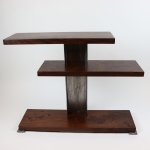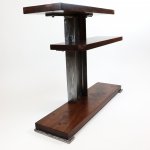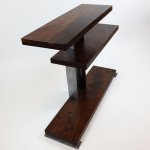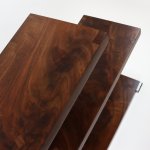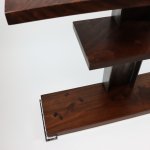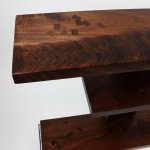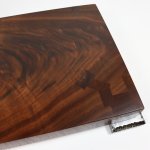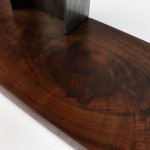rvieceli
Member
Just finished up this walnut and steel display shelf commissioned by a great client of mine.
The piece incorporates a eight inch wide flange beam as the central support for the "floating" walnut shelves. There is a lot of inlay work in the walnut shelves both top and bottom. Steel is clear coated and the walnut uses Osmo Polyx clear satin.
Overall the piece is 44 inches wide by 34 tall and 12 deep. The shorter shelves are 34 inches.
Ron
[attachimg=1]
[attachimg=2]
[attachimg=3]
The piece incorporates a eight inch wide flange beam as the central support for the "floating" walnut shelves. There is a lot of inlay work in the walnut shelves both top and bottom. Steel is clear coated and the walnut uses Osmo Polyx clear satin.
Overall the piece is 44 inches wide by 34 tall and 12 deep. The shorter shelves are 34 inches.
Ron
[attachimg=1]
[attachimg=2]
[attachimg=3]

